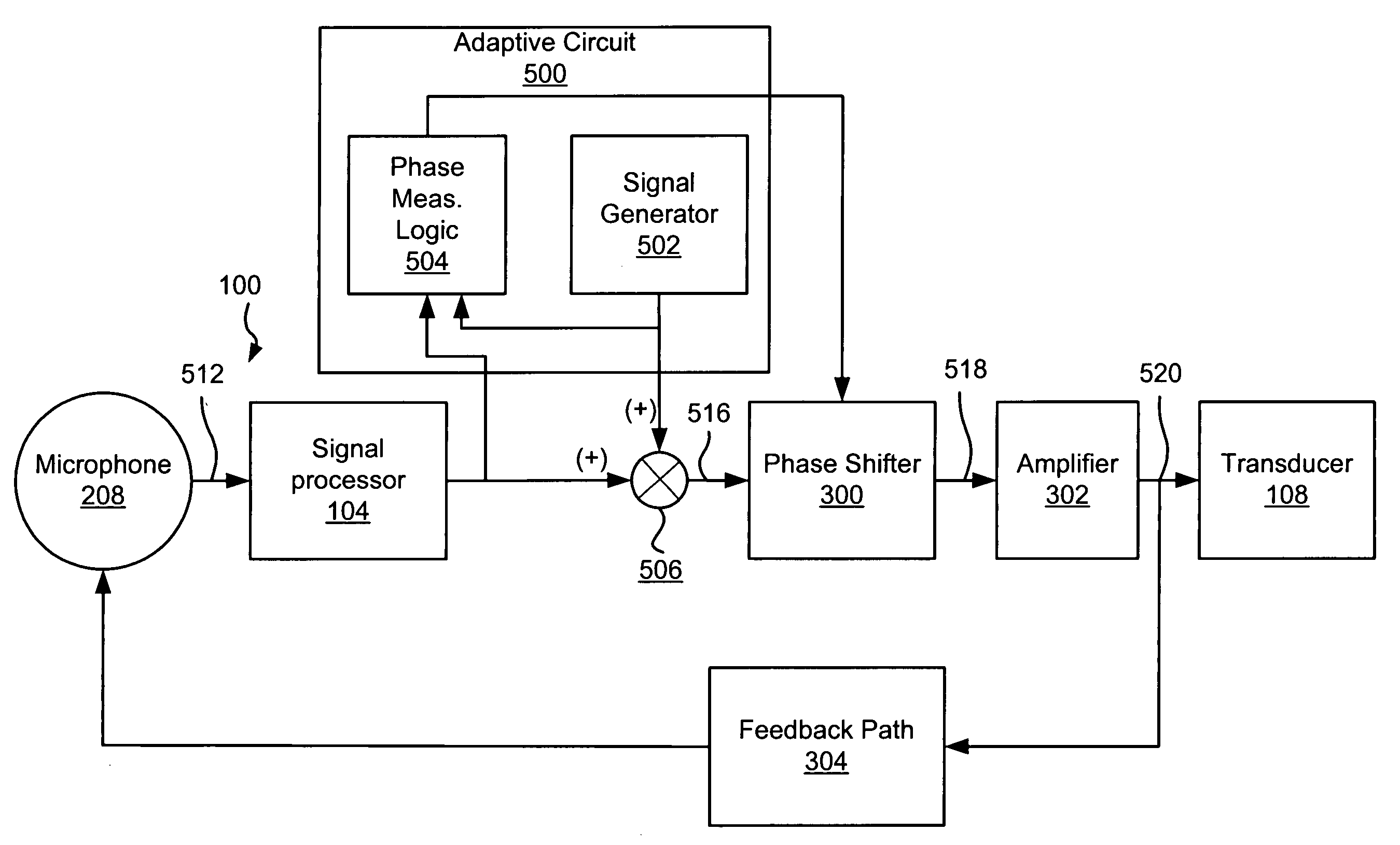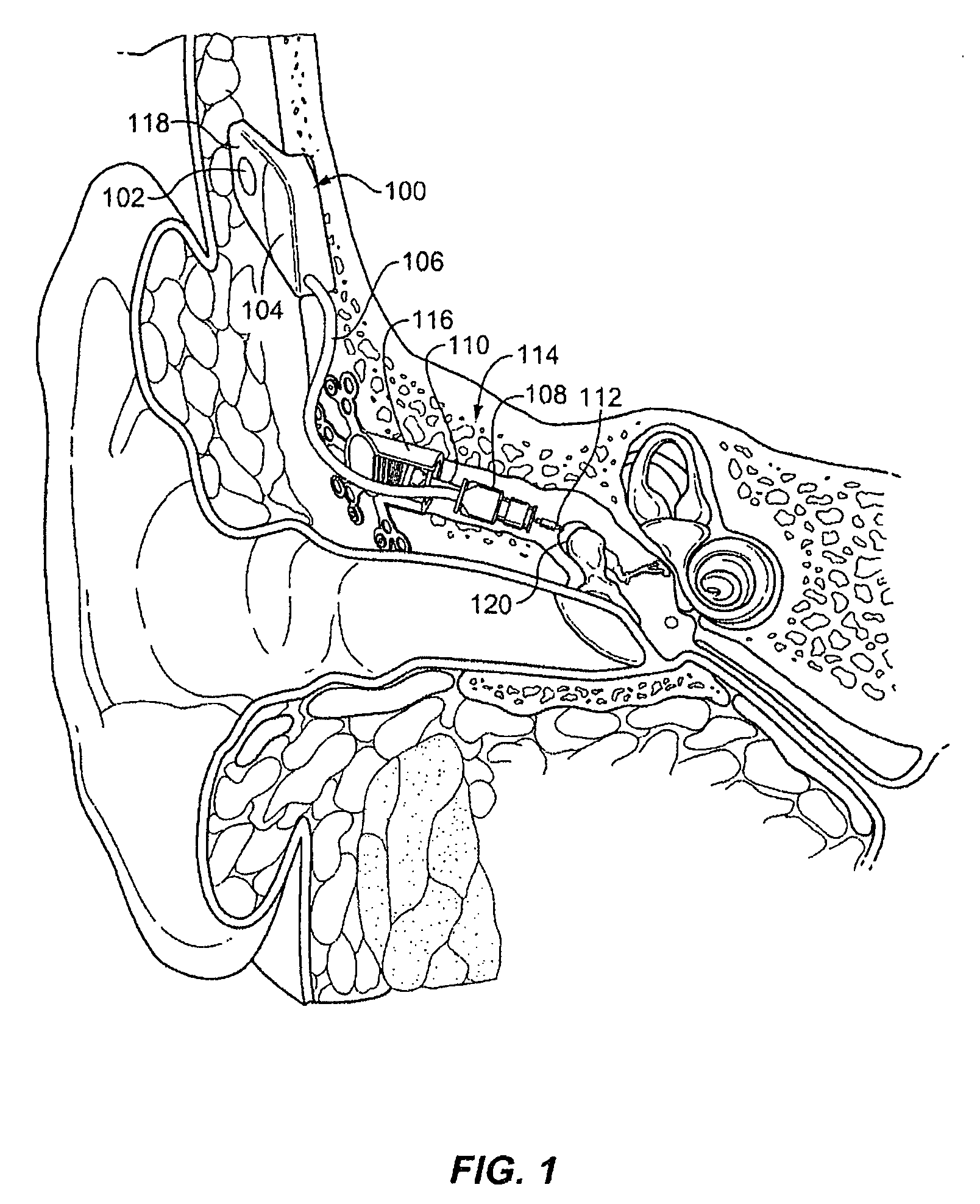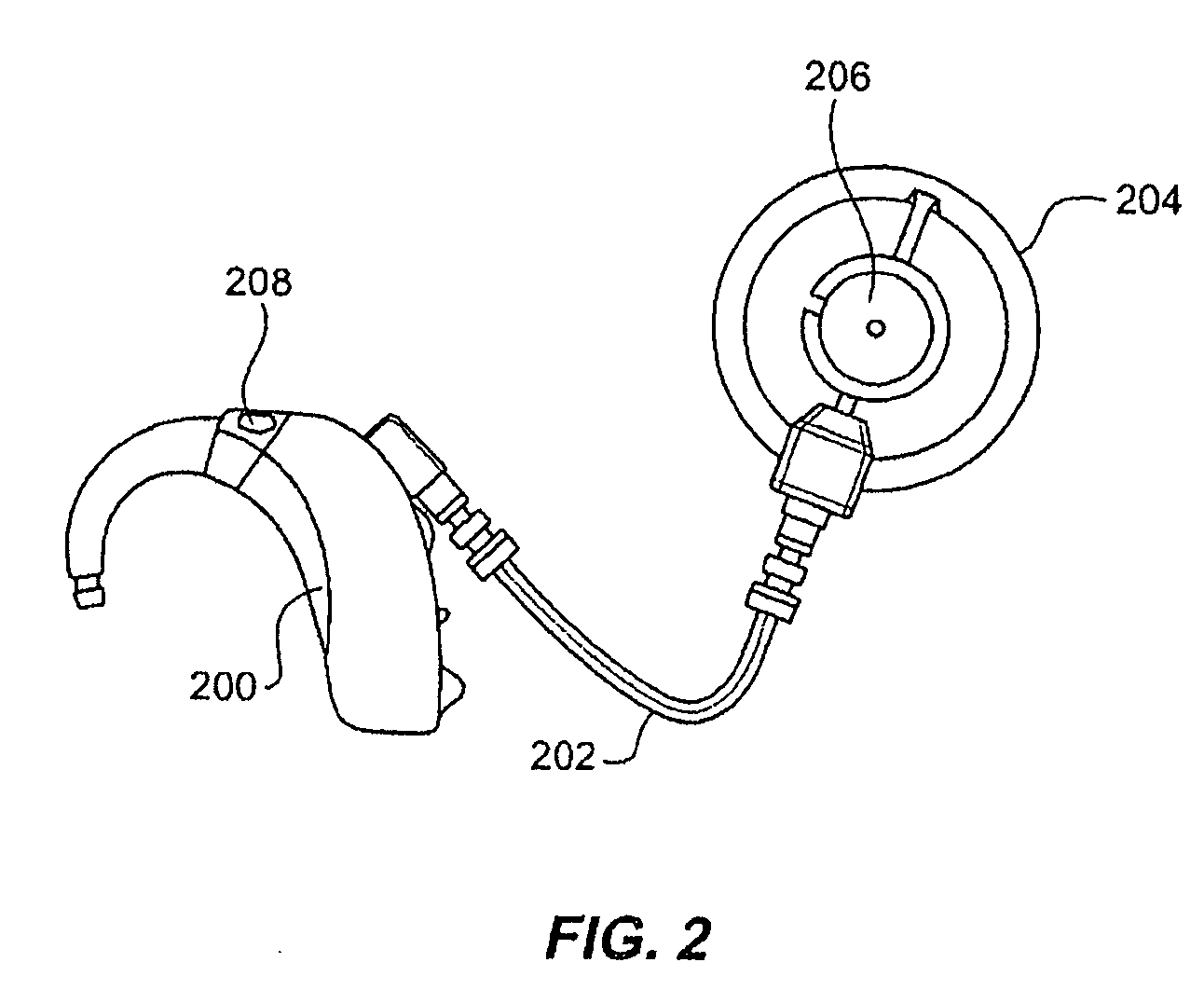Phase based feedback oscillation prevention in hearing aids
a phase-based feedback and hearing aid technology, applied in the direction of deaf-aid sets, electrical devices, etc., can solve the problems of difficult control of feedback oscillation, unpleasant noise or whistle produced by the user and others in close proximity, and the frequency of feedback oscillation is often subject to feedback oscillation, so as to prevent the oscillation of feedback signals without limiting the power of the hearing aid. , to achieve the effect of improving hearing quality
- Summary
- Abstract
- Description
- Claims
- Application Information
AI Technical Summary
Benefits of technology
Problems solved by technology
Method used
Image
Examples
first embodiment
[0037]FIG. 3 illustrates a partial schematic representation of the hearing aid device 100 configured according to the present invention. According to this embodiment, the hearing aid device 100 includes the microphone 208, the signal processor 104, the transducer 108, an amplifier 302, and a phase shifter 300. It will be appreciated, however, that the signal processor 104, the phase shifter 300, and the amplifier 302, may be part of the same device or circuitry as a matter of design choice, although such elements are shown individually on FIG. 1 for purpose of clarity.
[0038]In a hearing aid device, such as the deice 100, it usually cannot be avoided that at least a portion of the output signal from the amplifier 302 is provided back to the microphone 208 and ultimately the amplifier 302 via a feedback path represented on FIG. 3 by feedback path 304. The feedback path 304 may be a variety of paths according to the type of the hearing aid device 100. For instance, in a conventional he...
second embodiment
[0048]FIG. 5 illustrates a partial schematic representation of the hearing aid device 100 configured according to the present invention. According to this embodiment of the invention, the hearing aid device 100 includes the microphone 208, the signal processor 104, the phase shifter 300, the amplifier 302, the transducer 108, and an adaptive circuit 500. In this characterization, the adaptive circuit 500 operates to continually determine the phase of feedback signals over the feedback path 304 such that phase shifting coefficients in the phase shifter 300 may be continuously updated to prevent a zero net phase over the feedback path 304. In other words, the adaptive circuit 500 is operational to dynamically optimize, during normal operation of the hearing aid 100, the phase shifting coefficients of the phase shifter 300.
[0049]The adaptive circuit 500 includes a signal generator 502 and phase measurement logic 504. The phase measurement logic 504 and signal generator 502 operate to p...
third embodiment
[0058]FIG. 7 illustrates a partial schematic representation of the hearing aid device 100 configured according to the present invention. According to this embodiment, the hearing aid 100 includes the microphone 208, the signal processor 104, the phase shifter 300, the amplifier 302, the transducer 108, and an adaptive circuit 700. In contrast to the above embodiment, however, the adaptive circuit 700 includes the signal generator 502, and phase measurement logic 702 having oscillation detection logic 704. Operationally the adaptive circuit 700 not only performs periodic testing and measurement of the feedback path 304 as described above, but also uses the oscillation detection logic 704 to monitor the device 100 for feedback oscillation or favorable feedback oscillation conditions, to determine when such testing is necessary.
[0059]In this characterization, the oscillation detection logic 704 monitors the output signal from the signal processor 104 for conditions where feedback is de...
PUM
 Login to View More
Login to View More Abstract
Description
Claims
Application Information
 Login to View More
Login to View More - R&D
- Intellectual Property
- Life Sciences
- Materials
- Tech Scout
- Unparalleled Data Quality
- Higher Quality Content
- 60% Fewer Hallucinations
Browse by: Latest US Patents, China's latest patents, Technical Efficacy Thesaurus, Application Domain, Technology Topic, Popular Technical Reports.
© 2025 PatSnap. All rights reserved.Legal|Privacy policy|Modern Slavery Act Transparency Statement|Sitemap|About US| Contact US: help@patsnap.com



